Ielts Intelligence
Transforming test anxiety into test confidence
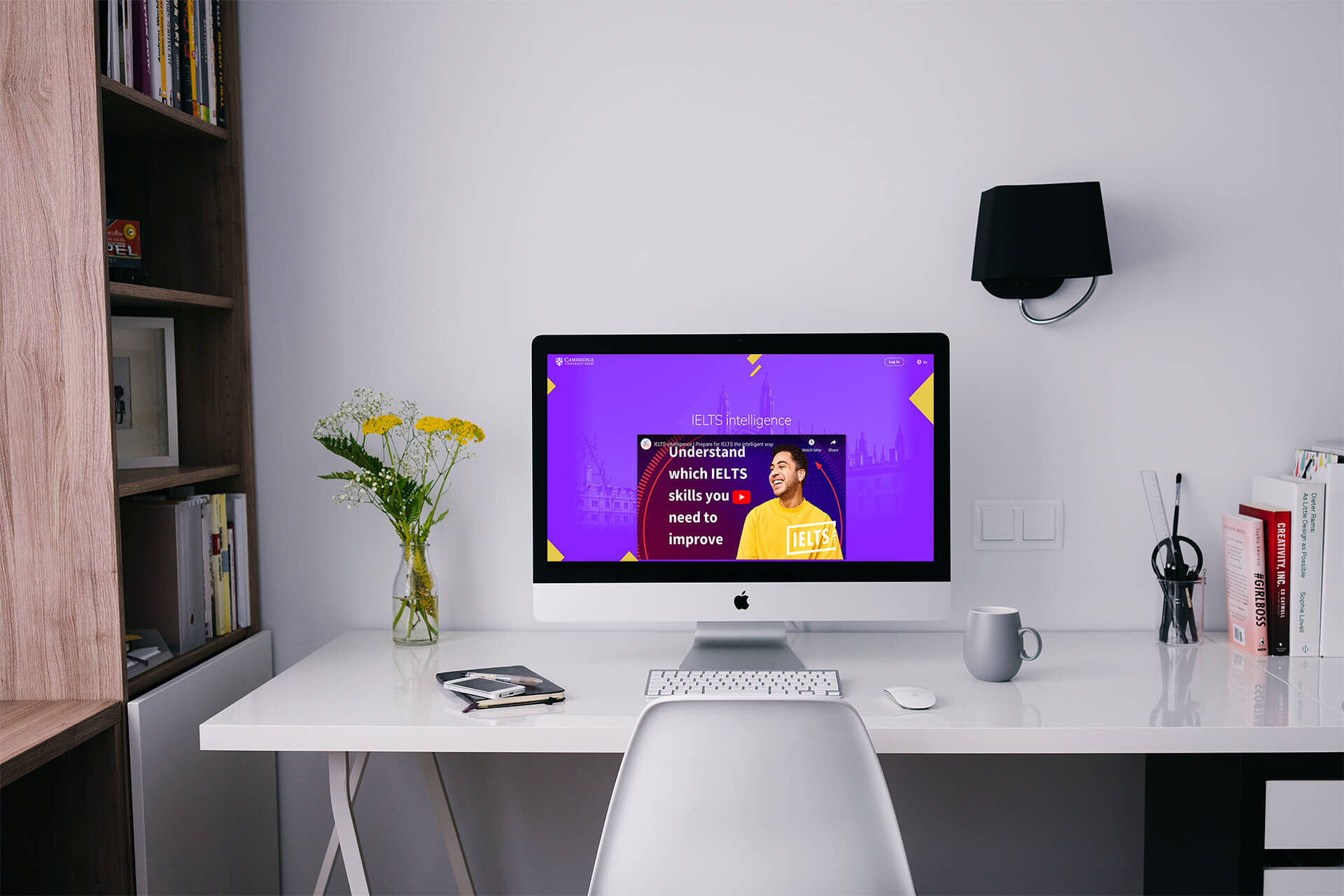
The Real Story: From Personal Experience to Empowering Design
Having prepared for and taken the IELTS exam myself, I brought a personal perspective to this project. I know first-hand how test prep can be filled with stress, self-doubt, and sleepless nights. My goal was to flip the script—transforming anxiety into genuine confidence and making IELTS preparation an empowering journey for every learner.
The Challenge
How might we reimagine test preparation as a journey that builds confidence, not just knowledge? How could we help candidates feel ready—not rattled—for one of the most important tests of their lives?
Understanding Test Anxiety
Through in-depth user research, we uncovered that test anxiety stemmed from three key sources: fear of the unknown, lack of personalised feedback, and feeling unprepared under pressure. I conducted interviews with 20+ test-takers and analysed their emotional journeys to identify critical pain points. This research revealed that learners needed more than practice questions—they needed psychological support and confidence-building tools integrated throughout their preparation.
Adaptive Learning Pathways
Recognising that no two learners are the same, I designed an adaptive system that:
- Assessed individual skill levels across all four IELTS components (Reading, Writing, Listening, Speaking)
- Generated personalised study plans based on time available until exam date and target band score
- Delivered targeted practice focusing on specific weak areas whilst maintaining overall progress
- Provided contextual feedback that explained not just what was wrong, but why, and how to improve
This meant every user received content and feedback tailored to their unique journey, making preparation feel personal, relevant, and achievable.
Empathy at the Core
We began by truly listening to test-takers—their fears, frustrations, and hopes. Every story, every concern, shaped our decisions. This empathy wasn't just a buzzword; it was the foundation for every feature and interaction we designed.
Mindset Matters
Research into test anxiety guided our approach. We embedded tools for reflection, stress reduction, and positive reinforcement. Preparation wasn't just about drilling skills, it was about building calm under pressure, so users could walk into their exam with genuine confidence.
Personalised Journeys
No two learners are the same. Our adaptive pathways ensured that every user received content and feedback tailored to their unique strengths and struggles. Preparation became personal, relevant, and achievable.
My Role
As a Lead Designer, I shaped the product's vision, strategy, and user experience from the ground up. Working within a cross-functional scrum team, I:
- Defined and prioritised product features in collaboration with stakeholders
- Led user research and synthesised findings into actionable insights
- Created and iterated on user journeys to promote alignment and clarity
- Designed intuitive, pixel-perfect interfaces ready for developer handoff
Approach
Every design decision was grounded in real user needs, validated through continuous research and feedback. I relied on sketches to ideate solutions, affinity maps to organise insights, and detailed user journeys and flows to visualise the experience from the user's perspective.
I reviewed all existing research and discovery data, building on prior knowledge whilst identifying fresh opportunities.
Planning & Scope Definition
I worked closely with stakeholders to define the product's scope, balancing user needs with business goals. This included prioritising features for the MVP and negotiating what could be delivered in future iterations
Wireframes and User Journeys
I created lo-fi wireframes that followed Cambridge One's established UI patterns, but also introduced new ideas to the platform. Before designing any screen, I mapped out how users would move through the product, identifying their main goals and pain points, and designing solutions for each.
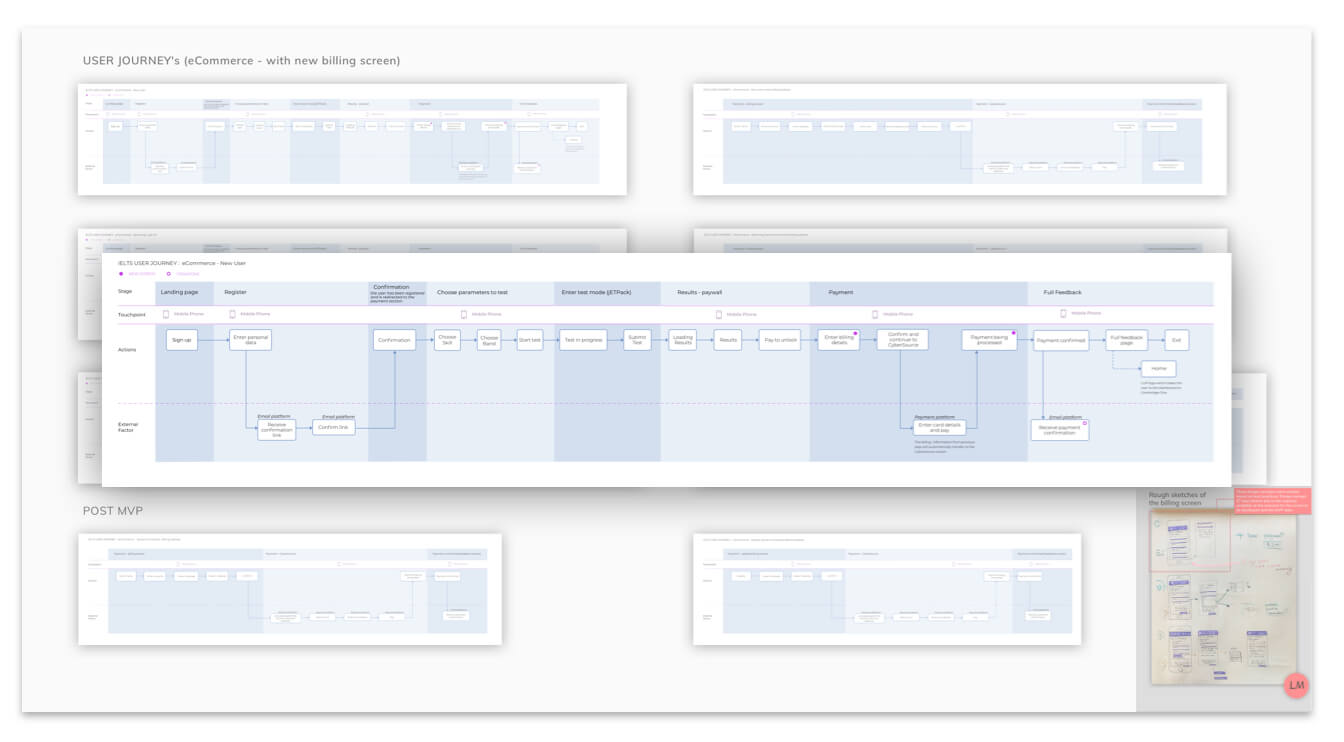
User Flow Design:For every new screen, I identified the top user goals and mapped ideal flows to reach them, proactively addressing potential challenges with thoughtful design choices.
Prototyping and Validation
I developed high-fidelity prototypes in Sketch and made them interactive using InVision. Usability testing was conducted with non-native English speakers, both in-person and remotely (via UsabilityHub and Maze), ensuring that real user feedback drove every iteration.
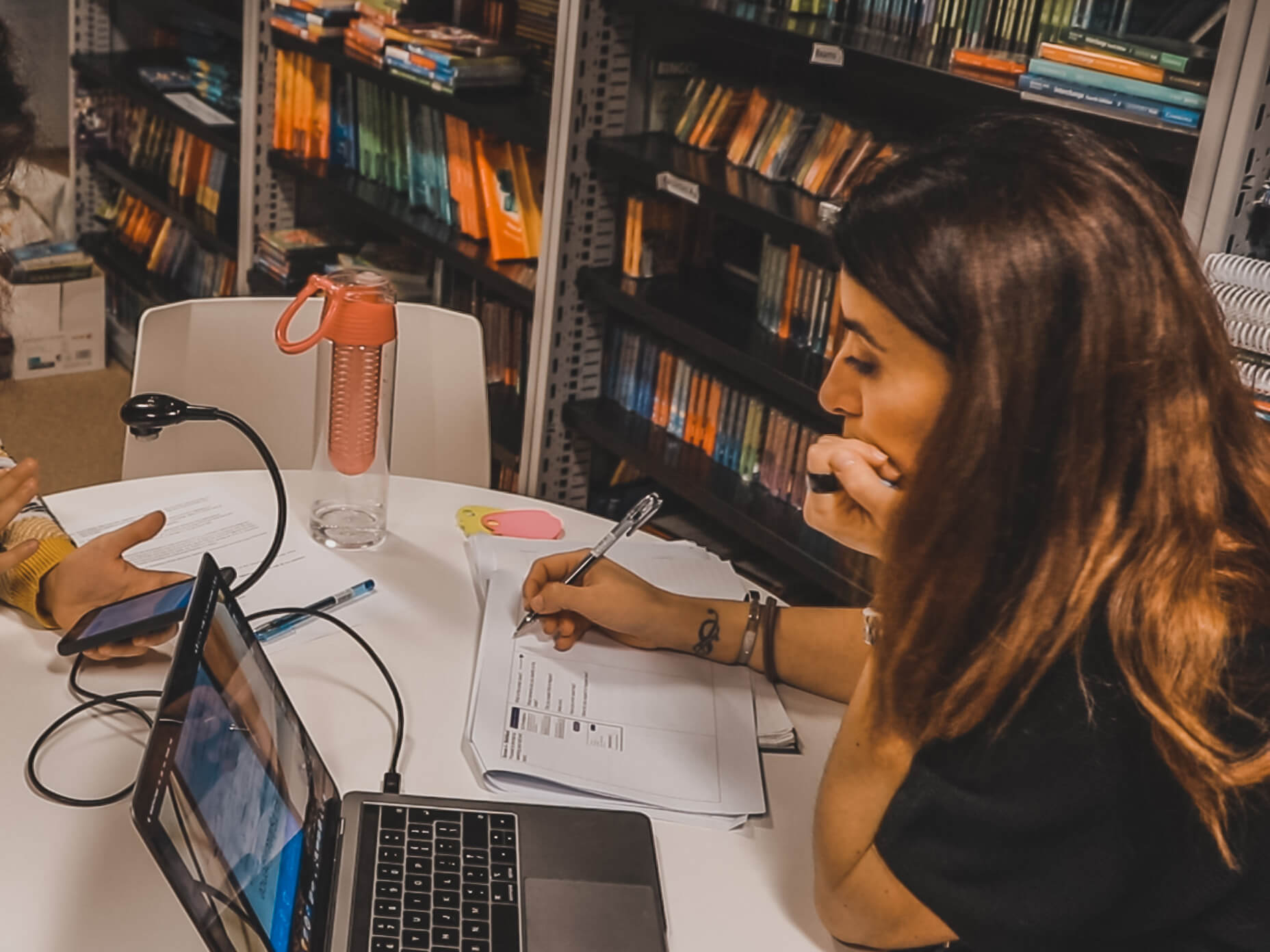
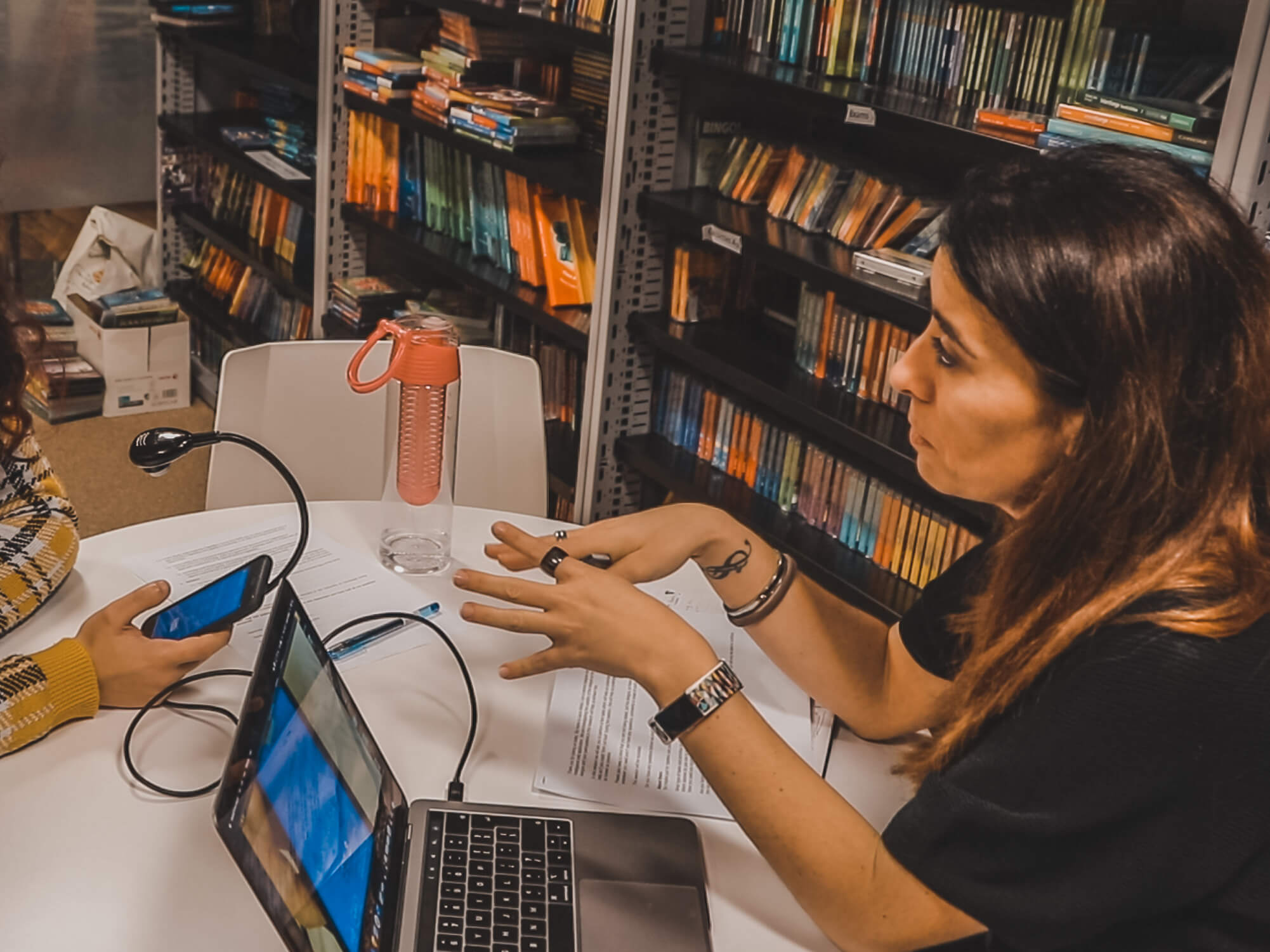
Testing with users in the Cambridge office
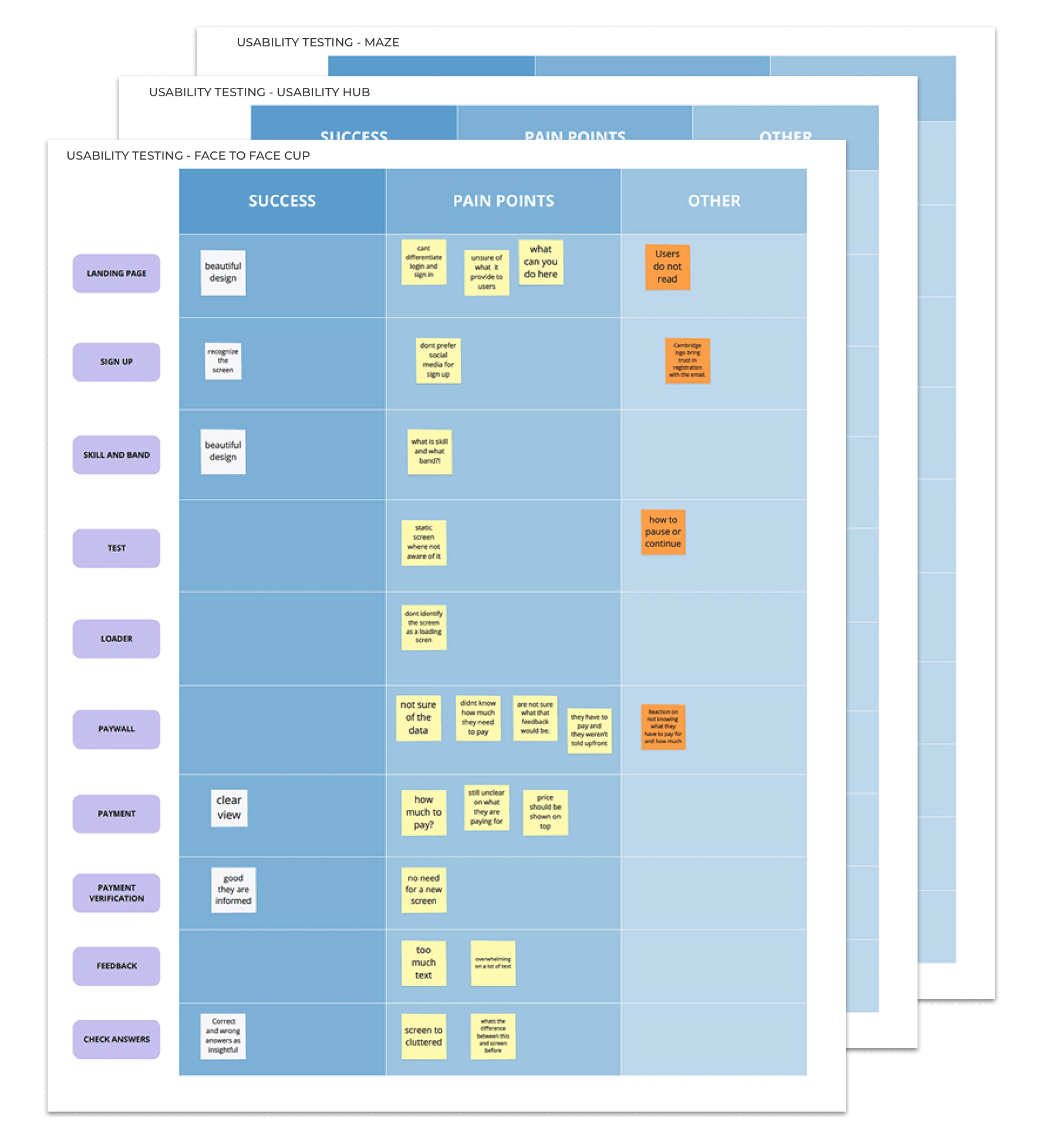
Notes from testing were organised into affinity maps using Miro, making insights accessible to the entire design and scrum team.
Analysis and Implementation
Findings from usability tests were prioritised, with the top issues addressed first. I generated detailed reports for stakeholders and created new iterative flows based on these insights, ensuring the product evolved in response to real user needs.
Screen flows mapped both primary and secondary user journeys, highlighting all steps and contingency plans for a seamless user experience.

Final Visual Design
After rounds of testing and iteration, I delivered a pixel-perfect UI ready for developer handoff. Every detail was informed by user research and validated through testing, ensuring a polished and effective product.

Reflection
Working on IELTS Intelligence was especially meaningful to me as a former IELTS candidate. My own experience shaped my commitment to designing a platform that genuinely supports and empowers test-takers.
I'm proud to have helped create a product that makes preparation less stressful and more confidence-building for learners worldwide.
